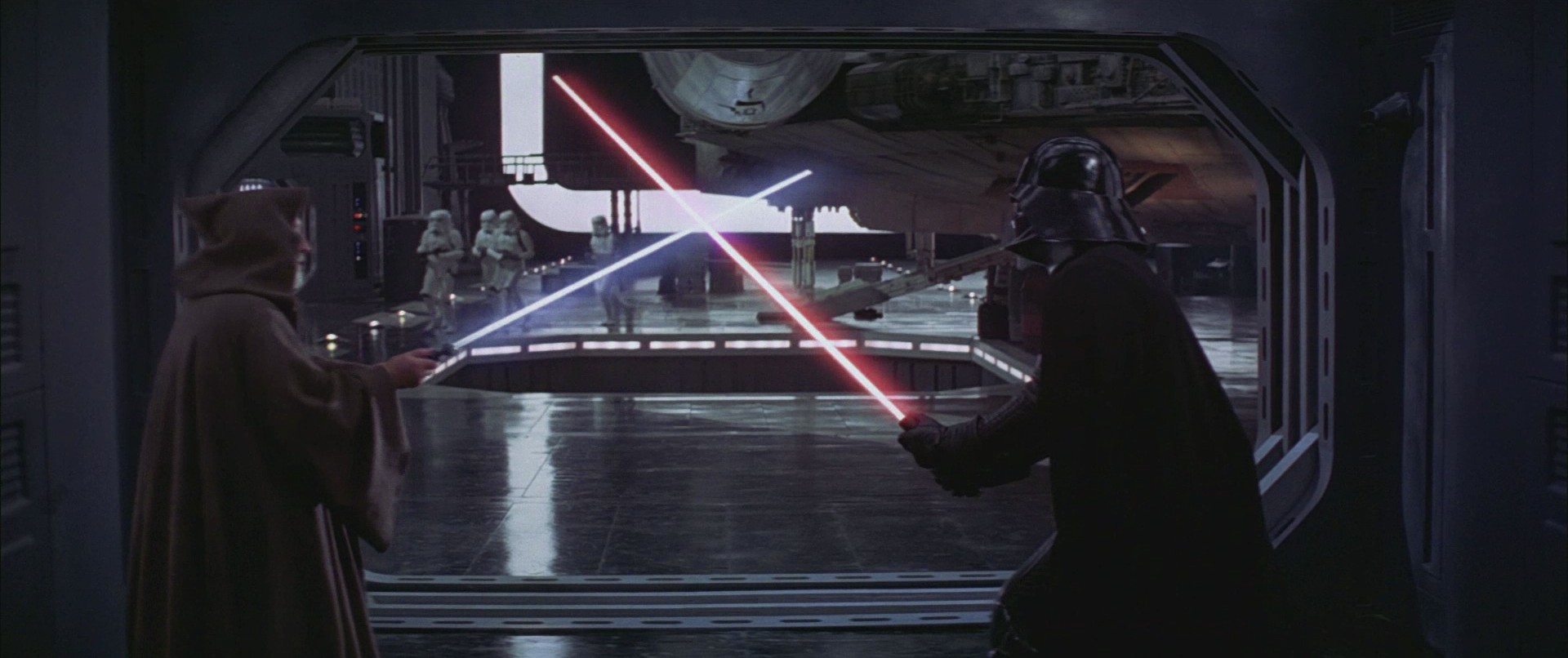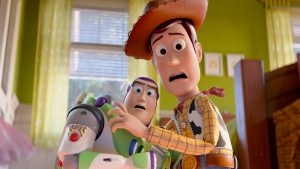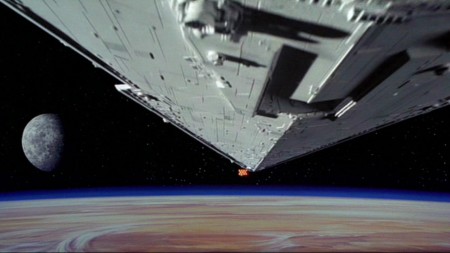
So. You’ve finally decided to watch Star Wars. Maybe your social circle is excited for the new films, and you don’t want to be left in the dark. Maybe you’re a Disneyland fanatic and don’t want to be lost in the new acreage. Maybe you’ve finally collapsed under the crushing weight of the guilt of not seeing an American classic, and your shame has finally… Sorry. Sorry. I’m getting ahead of myself.
Whatever your reason, good for you! You’re about to enjoy five or six of what equals out to three of the greatest films ever made! I know that it can be a terribly daunting task to begin to tackle close to forty years of material, but don’t worry. Like the great Jedi Masters before me, I shall guide you in the ways of the Force. That- …that will make more sense later.
Remember Your Training-
Before you dive into the films, there’s a few things that you should consider. First things first, as I assume you have not been living under a rock for near-half a century, you have a basic concept of what Star Wars is. You can probably recognize the iconic John Williams score, and know which end of the long glowstick to hold while making humming sounds.
This is all very well and good, but brings us to our first point: Clear your mind.
There’s so much saturation of Star Wars lore ingrained into our culture, that you probably already have some established biases and misconceptions about characters and places. Hard as it may be, try to set those aside, and let yourself form your own thoughts and opinions about what you’re watching. One of the great joys of the films is slowly understanding the universe unfolding in front of you, and letting the context of the characters in their surroundings help you along. Let it be new to you.
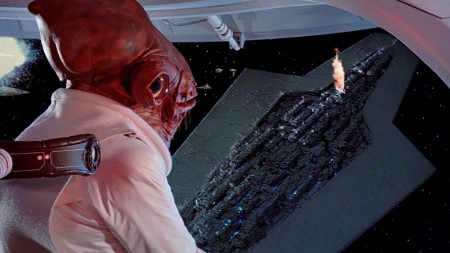
Next, it’s important to remember that the original three films may look dated to your 21st Century-Michael Bay-‘SPLOSIONS sensibilities. That’s because they are. These are films from a more… civilized age. They rely much more on practical effects like puppetry and models to achieve the aesthetic they are going for. And, frankly, they hold up, even when compared to the latest tech. Still, if your mind can’t help but pick apart the subtle giveaways that prove that lightsabers aren’t real, try to approach it as a historical piece of art. While some of the techniques used may seem campy and trite now, remember that these films were some of the first to actually pull these techniques off well. A New Hope was made with what was essentially a shoestring budget. Consider that when looking at all of the intricate detail on the ship in the opening shot. Somebody MADE that.
Oh, and if you’re confused on why some effects look impossibly computerized and weird compared to the rest of the fil… -Well. More on that later.
Lastly, I’m sure you’ve heard of, and have probably been terribly confused by, the order of the films. In total, there are six total films (so far), separated into two trilogies: the originals and the prequels. Also, each film is referred to as an “episode”. Think of each one as a part of the whole, like single episodes in a television series. One is not complete without the others.
The first episode released, A New Hope, starts off the original series of films released in 1977. It is Episode IV (4), because Episodes I-III (1-3) take place previous to the events of A New Hope, despite being released after it by many years.
It’s a little like having a movie about WWII come out, and then having a movie about WWI (and the events leading up to WWII) come out several years later. Episodes I-VI (1-6) happen chronologically according to the universe that they are set in, but were released IV, V, VI, I, II, III (4, 5, 6, 1, 2, 3).
The prequels, released several years after the originals, also had the advantage of much better technology when they were made. As such, the prequels, which happen before the originals, look more polished and advanced.
Confused yet? Don’t worry. It will all make sense later.
You’re Ready-
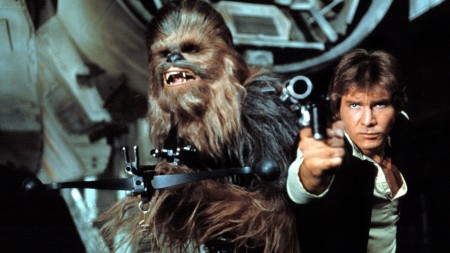
All right. Time to sit down and watch some Stars have some Wars. But where to start? In theory, you only have two options; by Episode, or by release date.
If you’re going by Episode order, it’s as easy as 1, 2, 3! …then 4, 5, and 6. The advantage to this method is seeing everything happen in the order the events portrayed take place, without any terribly confusing jumps in time. The problem with this way of watching is that IV-VI were released decades before I-III, and a lot of the prequels assume prior knowledge. There’s not a lot of weight to what is happening without knowing what happens later.
You can then try watching them in release order (IV, V, VI, I, II, III). With this method, you get to see the episodes unfold in the same order the rest of the world experienced them. This is closer to right, in that there’s an adequate weight to the prequels after watching the originals, but there’s still a bit of a problem here. By watching the originals all first, you are quickly going through what most people consider the best of the films. In case the internet hasn’t spoiled this one for you, the prequels… were not generally very well received. While a lot does happen in the prequels of significant overall value of the plot, they just don’t have the same feel as the originals, and don’t really hold up on their own. While I do think it’s important to see these films, I’ll admit that they’re a bit like finishing your Brussels sprouts before you’re allowed to have dessert. Switch up the order, and- Well. It’s hard to tolerate that much gross stuff after three scoops of ice cream.
Fortunately, the internet has graced us with a third viewing order! The Machete Order, as created by Rod Hilton, suggests a unique shuffling of the films by putting them in this order: IV, V, (I), II, III, VI
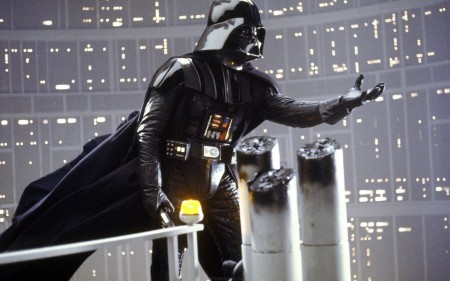
The reasoning is fairly simple. You start with the film everyone started with, and watch the first two as intended. At the end of V, there’s a rather sizeable cliffhanger and twist that makes the prequels relevant. They then act as a sort of long flashback to what caused the twist. You then finish out with the dramatic conclusion of the original series.
Now, you probably noticed Episode I in parentheses up there. That’s because the creator of this order thinks it best to skip that one entirely. While I am very tempted to agree (the film really is a train wreck when compared to the others, and is certainly the most painful to get through of the prequels), I feel it is important to watch at least once, so you can at the very least agree with other fans that it was terrible.
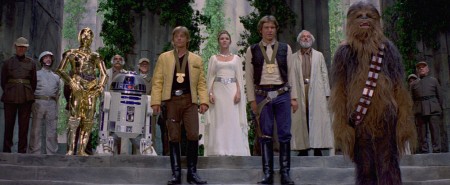
The Saga Lives On-
As I mentioned before, something may be a bit… off about the originals. Random spurts of CGI, years ahead of the special effects surrounding them. You’re not tripping out, there is something up. When the films came out in their original theatrical version, director George Lucas had made something very special. And as with any artist that pours a bit of their soul in to their work, Mr. Lucas became a bit… attached. As the years went on, and technology advanced, our dear director felt he could improve upon his creations with these new tools.
I’m of the opinion that Mr. Lucas, with the best of intentions, did the equivalent of Michelangelo adding a jetpack to David. Yes, it’s kind of cool to think about, and the artist was technically just improving on their own work, but an interesting thing happens when you release your art to the public. It becomes something more. You’ve reached the point of wanting to watch these films, not because ol’ George knocked on your door and sold you on the idea of the Force, but because of the MILLIONS of fans in the world who love them, and the dozen or so of your friends who can’t BELIEVE you haven’t seen them yet.
So, if you can’t get your hands on an original theatrical cut of the originals (and no one would blame you if you can’t, there’s been about three other updates), just take its quirks with a grain of salt. Star Wars, in many ways, is the great American fairytale. It has heroes and villains, good and evil, right and wrong. It tells the story of the greatness that can be achieved through humble beginnings and faith in your own strength. Finally, and arguably most importantly, it shows a vision of a fantastical world still light-years away from our own capabilities, yet presented as a universe a long time ago, in a galaxy far, far away. Meaning there is still so much more to come that even what you are watching will become distant memory.
Oh, yeah. And there are LIGHTSABER FIGHTS! PEW! PEW! DAH, DAAAH! DA DA DA DAAAAAAH DUUUH!
